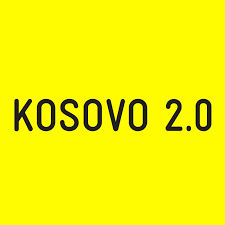A few months ago, I started receiving notifications from Google every time my name and surname were mentioned in various online articles. But when I opened them, I couldn’t find myself. Instead of “Demi,” I found the surname translated as “Taurus” or “Bull.” Many online media outlets in Kosovo have begun using artificial intelligence (AI) to automatically translate content from Albanian into English and other languages.
These automated translations also extend to older archives, where every word, whether a noun or a specific Albanian expression, is processed by an algorithm that doesn’t recognize context. My surname was translated based on the first meaning the AI system offered. To the system, “Demi” wasn’t a surname, it was sometimes an animal, sometimes a horoscope sign.
This is a small but illustrative example of how AI has begun to shape the distribution of information in Kosovo, not through talking robots, but through invisible automations that are changing the way we write, translate, and construct narratives.
At the end of 2022, when ChatGPT was first released for public testing, I spent a few weeks experimenting with it, before writing an opinion piece for the New Year festive issue of “Koha Ditore.” In that piece, I shared my concerns about the future of my profession as an analyst and opinion writer. ChatGPT was able to generate well-structured texts, factually accurate, and with a balanced approach to complex topics such as Kosovo’s status, governance, the north, and international relations. The idea that an AI-powered language model could replace my work was no longer theoretical, it had already become real.
Two years later, these concerns have evolved. ChatGPT has significantly improved in both speed and quality. But the greatest impact lies not in the accuracy of the content it produces, but in how this content is being used in practice, whether by citizens or institutions in Kosovo. AI has become a daily tool for many: schoolchildren writing essays, students preparing seminar papers, lecturers drafting syllabi, officials composing press releases, politicians crafting speeches, and citizens writing condolence messages.
A recent widely discussed case involved a well-known politician who published a condolence message on social media but forgot to remove the prompt he had given to ChatGPT. The incident quickly went viral and was largely seen as an example of the superficial use of AI. However, it actually points to something deeper: a lack of preparedness to use this technology in a conscious and responsible way.
In the private sector, AI has already replaced entire roles in digital content creation and reshaped the work of translators. Meanwhile, the public sector continues to lag behind, marked by slow development and the absence of a systematic approach to adopting new technologies.
Businesses save time with AI, institutions lose time with bureaucracy
The irony lies in the fact that the very institutions tasked with driving the country’s digital transformation continue to operate with bureaucratic standards that haven’t been updated in decades.
Recently, the Government of Kosovo announced a vacancy for the position of Director of the Information Society Agency (ASHI) and the new Cybersecurity Agency, both of which are expected to lead the digital transformation of public institutions and services, including the e-Kosova platform, the country’s first platform to digitize several public services.
But to apply for these positions, candidates must physically submit copies of documents, notarized translations, diploma nostrifications, and certificates of English language proficiency. For someone with the technological skills required for this role, someone capable of developing digital solutions and leading innovative teams, this process is an obstacle, not an opportunity. At a time when the market demands digital solutions, forward-thinking, and technological leadership, the state still demands physical copies of certificates and notary stamps.
In the private sector, developments tend to move more quickly. With the emergence of dozens of new generative AI platforms, such as Grok, Gemini, MidJourney, and DALL·E, the country’s private sector was the first to begin integrating them into daily workflows.
Companies working in translation, digital content, marketing, and training are among the first to integrate AI into their workflows. This has improved efficiency and reduced costs — but not without consequences. The automation of certain tasks has also led to job losses.
One company in Kosovo that previously relied on a team of translators to manually translate technical specifications for imported products told me that it managed to automate this process a year ago, saving hundreds of thousands of euros and significantly speeding up operations. Human translators are now involved only in the revision process, not in full translation.
An owner of a company offering training in social media management told me that, with the rise of AI, he had laid off several employees. Tasks like content creation, which previously took hours, could now be completed in minutes.
In the fields of design and advertising, tools such as MidJourney and DALL·E have replaced photographers and illustrators for everyday visual needs. Creative work is being directly shaped by generative AI models, which produce immediate, ready-to-use results. However, there remains a significant gap between the pace of technological development and the level of employee preparedness or investment needed to adopt and implement these tools effectively.
Investment in AI skills lags behind
Most workers do not have access to training in these tools and, as a result, struggle to adapt. Technological developments are outpacing skill acquisition: while integrating new tools helps companies reduce costs, investing in employee training requires time and resources. Within this gap, part of the market is becoming more efficient and agile, while segments of the workforce are at risk of losing their jobs to technologies they neither understand nor are equipped to use.
Public investment in preparing the next generation of workers is even more discouraging. The number of young people who are unemployed and not engaged in education or training remains high. This group, a key indicator of the social and economic inactivity of youth, has stayed at alarming and largely unchanged levels, hovering around 33% since 2020, with a slight drop to 30.3% in the second quarter of 2024. This suggests that a significant portion of young people continue to be excluded from economic activity and vocational training cycles.
Young people within the education system aren’t in a much better position. While the job market increasingly demands digital skills, public schools in Kosovo still operate with outdated curricula and limited access to technology. Disconnected from the reality where students are already using AI to complete assignments, the public education system offers just one computer for every 35 students.
According to data from the Ministry of Education, Science, Technology and Innovation, only 66.64% of public educational institutions had internet access in 2021, often limited to administrative offices or a few laboratories. Across the entire public system, which serves around 320,000 students, there are only 9,138 computers.
In his book Brave New Words: How AI Will Revolutionize Education (and Why That’s a Good Thing), Salman Khan, founder of Khan Academy, an online learning platform, argues that AI can serve as a personalized teacher for every student: one that is non-judgmental and never fatigued. However, realizing this potential requires a complete rethinking of how we understand teaching.
If public education institutions do not act urgently to adapt curricula to technological developments and market demands, younger generations risk remaining unprepared and excluded from the labor market for years to come. In the absence of a systematic approach, young people are left to rely on individual efforts to adapt to a constantly evolving world. And if the generations preparing to enter a labor market shaped by AI and digitalization do not acquire the skills that this market requires, how can they be expected to contribute meaningfully? When public institutions fail to invest in developing these skills, a gap emerges — one that risks becoming structural.
This calls for deeper collaboration between the public and private sectors. In their recent book, The Technological Republic: Hard Power, Soft Belief, and the Future of the West, Alexander C. Karp and Nicholas W. Zamiska advocate for closer cooperation between governments and technology companies, especially in this era of rapid AI advancement. According to the authors, while the post–World War II boom was largely driven by collaboration between the state and scientists, in recent decades the most knowledgeable minds have focused primarily on increasing profits and customer bases in private companies, rather than advancing security, public welfare, or good governance.
Similarly, the future government of Kosovo should establish a group of experts composed of leaders from the country’s largest technology companies, working together to lay the groundwork for transformative reforms in education, healthcare, public services, the judiciary, inspections, and the full digitalization of administrative procedures.
The scenario I once feared that AI would replace me as an analyst and opinion writer, has not come to pass. AI hasn’t replaced my thinking; it has helped me think more clearly. Before using ChatGPT and similar tools, a lack of self-confidence often held me back from taking on new responsibilities slightly beyond my professional training, especially when it came to writing professionally in English or analyzing complex data. Today, those obstacles no longer stop me. I’ve learned how to collaborate with technology to improve my work. I write faster, produce clearer analyses, and make more data-driven decisions.
But something else has been accomplished: AI helped me write this text — not by doing it for me, but by enabling me to finish it more precisely, more quickly, and with greater confidence.
The question is no longer whether AI will replace us. The real question is whether we will learn to work with it before we’re left behind.
Feature Image: Dina Hajrullahu / K2.0

